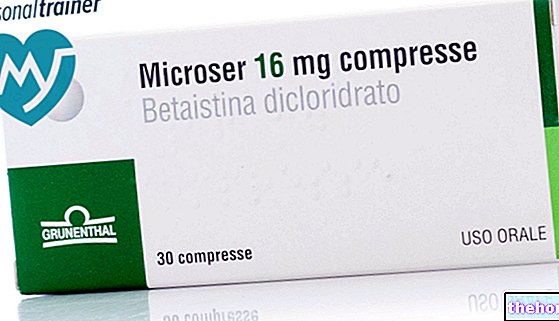Active ingredients: Triamcinolon, Chlorpheniramine
DIRAHIST® “1 mg + 2 mg hard capsules” 24 capsules
Why is Dirahist used? What is it for?
PHARMACOTHERAPEUTIC CATEGORY
Antihistamine-cortisone drug
THERAPEUTIC INDICATIONS
All allergic diseases, especially if accompanied by excessive general or local release of histamine: urticaria, hay fever, vasomotor rhinitis, angioneurotic edema, allergic dermatitis and dermatosis, itching, bronchial asthma, allergic purpura, conjunctivitis and other eye diseases, migraine and headaches of allergic origin DIRAHIST can also be useful in food sensitization and transfusion reactions, from antibiotics or chemical substances (animal poisons, for example) or medicaments.
Contraindications When Dirahist should not be used
Absolute: Tuberculosis and herpes simplex. Systemic fungal infections.
Known hypersensitivity to the components.
Relative (evaluate the risks associated with the therapy with the expected benefits): active peptic ulcer, acute glomerulonephritis, osteoporosis, thrombophlebitis, recent intestinal anastomosis, diverticulitis, mental disorders, local or systemic infection with the inclusion of mycoses and exanthematous diseases.
Precautions for use What you need to know before taking Dirahist
In pregnant women and in very early childhood, the product should be administered only in cases of real need under the direct supervision of the Doctor. In patients with hypoprothrombinemia, caution is advised in associating acetylsalicylic acid with glucocorticoids.
Pre-existing emotional instability or psychotic tendencies can be aggravated by glucocorticoids.
In patients with hypothyroidism or with cirrhosis of the liver, the response to glucocorticoids may be increased.
In patients on glucocorticoid therapy subjected to particular stress, it is essential to adjust the dose in relation to the extent of the stressful condition.
Interactions Which drugs or foods can modify the effect of Dirahist
In patients with hypoprothrombinemia, in treatment with cortisone, the use of salicylates should be carried out under control and with caution.
Patients on glucocorticoid therapy should not be vaccinated against smallpox. Other immunizing procedures should not be undertaken in patients receiving glucocorticoids especially at high doses, due to possible risks of neurological complications and insufficient antibody response.
Warnings It is important to know that:
DIRAHIST can also be used in subjects suffering from acute or chronic infectious processes, provided that adequate treatment with antibiotics and / or chemotherapy is implemented.
Glycocorticoids can mask some signs of infection, and intercurrent infections can occur during their use. In these cases, the opportunity to institute adequate antibiotic therapy must always be evaluated.
A state of secondary, glucocorticoid-induced adrenal insufficiency can be minimized with a gradual reduction in dosage. This type of relative insufficiency can persist for months after discontinuation of therapy. So in any stressful situation that occurs during this period. hormone therapy should be resumed.
During prolonged therapy and with high doses, should an alteration of the electrolyte balance occur, it is advisable to adjust the sodium and potassium intake. All the glucocorticoids increase the excretion of calcium.
Since, due to the presence of the antihistamine, the product can cause drowsiness, those who could drive vehicles of any kind or wait for operations requiring integrity of the level of vigilance must be warned of this.
Psychic alterations of various kinds can occur during therapy; euphoria, insomnia, mood or personality changes, severe depression or symptoms of true psychosis.
For those who carry out sporting activities, the use of the drug without therapeutic necessity constitutes doping and can in any case determine positive anti-doping tests.
KEEP THE MEDICINAL PRODUCT OUT OF THE REACH AND SIGHT OF CHILDREN
Dose, Method and Time of Administration How to use Dirahist: Posology
The average dose is 1 - 2 capsules 4 times a day. It is good to keep in mind that the dosage must be individualized, and that once the desired result has been obtained it is possible to gradually reduce the daily dose until reaching the minimum which in the single case allows the maintenance of a satisfactory situation.
The maintenance posology must always be the minimum capable of controlling the symptoms; a dosage reduction must always be done gradually.
Overdose What to do if you have taken too much Dirahist
METHOD OF INTERVENTION IN CASE OF EXCESSIVE DOSES
In case of overdose, notify your doctor immediately.
CONDUCT TO FOLLOW IN CASE OF OMISSION OF DOSES
Resume the planned treatment as soon as possible.
POSSIBLE RISK OF WITHDRAWAL SYNDROME
In prolonged treatment, avoid abruptly discontinuing cortisone therapy. Before stopping treatment, consult your doctor.Side Effects What are the side effects of Dirahist
During therapy, especially for intense and prolonged treatments, some of the following effects may occur:
- alterations in the water-electrolyte balance especially hypokalaemia, which. rarely and in particularly predisposed patients, they can lead to hypertension and congestive heart failure;
- musculoskeletal alterations, such as osteoporosis, myopathies, bone fragility;
- complications affecting the gastrointestinal system which can lead to the appearance or activation of a peptic ulcer;
- skin alterations such as delays in the healing process, thinning and fragility of the skin; eruptions on an idiosyncratic basis;
- neurological changes such as dizziness, headache and increased intracranial pressure;
- dysendocrinies such as menstrual irregularities, cushingoid-like appearance, growth disturbances in children; interference with the functionality of the pituitary-adrenal axis, particularly in times of stress; decreased tolerability to carbohydrates and possible manifestation of latent diabetes mellitus, as well as increased need for hypoglycemic drugs in diabetics;
- ophthalmic complications such as posterior subcapsular cataract and increased intraocular pressure;
- negativization of the nitrogen balance, for which, in prolonged treatments, the protein ration must be adequately increased and the growth of the children carefully followed.
THE PATIENT MUST REPORT ANY UNDESIRABLE EFFECT NOT DESCRIBED IN THIS PACKAGE LEAFLET TO HIS PHYSICIAN.
Expiry and Retention
Keep the product in its original packaging and in a safe place.
No special storage precautions
Warning: do not use the medicine after the expiry date indicated on the package.
COMPOSITION
One capsule contains:
Active principles:
Triamcinolone 1 mg
Chlorpheniramine maleate 2 mg
Excipients: dibasic calcium phosphate, magnesium stearate, erythrosine (E 127), indigo carmine (E 132), titanium dioxide (E 171), gelatin
PHARMACEUTICAL FORM AND CONTENTS BY WEIGHT
Capsules containing 1 mg of triamcinolone and 2 mg of chlorpheniramine maleate.
Source Package Leaflet: AIFA (Italian Medicines Agency). Content published in January 2016. The information present may not be up-to-date.
To have access to the most up-to-date version, it is advisable to access the AIFA (Italian Medicines Agency) website. Disclaimer and useful information.
01.0 NAME OF THE MEDICINAL PRODUCT
DIRAHIST
02.0 QUALITATIVE AND QUANTITATIVE COMPOSITION
One capsule contains: Active ingredients: Triarncinolone 1 mg; Chlorpheniramine maleate 2 mg
Excipients: dibasic calcium phosphate 180.95 mg; magnesium stearate mg 1. Capsule constituents: Erythrosine (E 127) 1.08 mg; indigo carmine (E 132) 0.005 mg; titanium dioxide (E 171) 0.42 mg; gelatin 40.075 mg.
03.0 PHARMACEUTICAL FORM
Hard gelatin capsules for oral use.
04.0 CLINICAL INFORMATION
04.1 Therapeutic indications
All allergic diseases, especially if accompanied by excessive general or local release of histamine: urticaria, hay fever, vasomotor rhinitis, angioneurotic edema, allergic dermatitis and dermatosis, itching, bronchial asthma, allergic purpura, conjunctivitis and other eye diseases, migraine and allergic headaches.
DIRAHIST can also be useful in food sensitization and transfusion reactions, from antibiotics or chemical substances (animal poisons, for example) or medications.
04.2 Posology and method of administration
The average dose is 1 - 2 capsules 4 times a day.
It is good to keep in mind that the dosage must be individualized and that, once the desired result is obtained, it is possible to gradually reduce the daily dose until it reaches the minimum, which in the individual case allows the maintenance of a satisfactory situation.
The maintenance posology must always be the minimum capable of controlling the symptoms; a dosage reduction must always be done gradually.
04.3 Contraindications
Absolute: Tuberculosis and herpes simplex. Systemic fungal infections. Known hypersensitivity to the components.
Relative (evaluate the risks associated with the therapy with the expected benefits): active peptic ulcer.acute glomerulonephritis, osteoporosis, thrombophlebitis, recent intestinal anastomosis,
diverticulitis, mental disorders, local or systemic infection with the inclusion of mycoses and exanthematous diseases.
The Dirahist can also be used in subjects suffering from acute or chronic infectious processes, provided that adequate treatment with antibiotics and / or chemotherapy is implemented.
04.4 Special warnings and appropriate precautions for use
In patients treated with glucocorticoids subjected to particular stress, it is essential to adjust the dose in relation to the extent of the stressful condition.
Glycocorticoids can mask some signs of infection and intercurrent infections can occur during their use; in these cases the opportunity to institute an adequate antibiotic therapy must always be evaluated.
During prolonged therapy and with high doses, should an alteration of the electrolyte balance occur, it is advisable to adjust the sodium and potassium intake.
All glycocortocoids increase calcium excretion.
Patients on glucocorticoid therapy should not be vaccinated against smallpox. Other immunizing procedures should not be undertaken in patients receiving glucocorticoids, especially at high doses, due to possible risks of neurological complications and insufficient antibody response.
A state of secondary adrenal insufficiency, induced by the glucocorticoid, can be minimized with a gradual reduction of the dosage. This type of relative insufficiency can persist for months after discontinuation of therapy; therefore, in any stressful situation that occurs during this period, hormone therapy should be resumed.
In hypothyroid patients or patients with liver cirrhosis, the response to glucocorticoids may be increased. In patients with hypoprothrombinemia, caution is advised in combining acetylsalicylic acid with glucocorticoids.
The maintenance posology must always be the minimum capable of controlling the symptoms; a dosage reduction must always be done gradually.
Psychic alterations of various kinds can occur during therapy; euphoria, insomnia, mood or personality changes, severe depression, or symptoms of true psychosis. Persistent emotional instability or psychotic tendencies can be aggravated by glucocorticoids.
The use of chlorpheniramine should be monitored in patients with renal insufficiency for the lengthening of the plasma half-life in this disease.
Keep out of reach of children.
04.5 Interactions with other medicinal products and other forms of interaction
The simultaneous use of systemic steroids with barbiturates, phenytoin, carbamazepine, aminoglutethimide and rifampicin can increase the metabolism of steroids, including triamcinolone, reducing their efficacy; this requires increasing the doses of triamcinolone.
Similarly, attention must be paid to the simultaneous use of oral contraceptives, ketoconazole and trioleandomycin, which reduce the metabolism of steroids, increasing their side effects.
The use of alcohol and hypnoinducers can increase the depressant effect of chlorpheniramine on the central nervous system.
04.6 Pregnancy and lactation
The use of the product during pregnancy and lactation is to be limited to cases of actual need and under direct medical supervision.
04.7 Effects on ability to drive and use machines
Due to the presence of the antihistamine, the product can cause drowsiness; those who could drive vehicles of any kind or wait for operations requiring integrity of the degree of vigilance must be warned of this.
04.8 Undesirable effects
During therapy, especially for intense and prolonged treatments, some of the following effects may occur:
Alterations of the hydro-electrolyte balance; especially hypokalaemia.
Musculoskeletal alterations, such as osteoporosis, myopathies, bone fragility.
Complications affecting the gastrointestinal system, which can lead to the appearance or activation of a peptic ulcer, especially in the case of simultaneous use of non-steroidal inflammatory drugs.
Skin alterations such as delays in the healing processes, thinning and fragility of the skin; eruptions on an idiosyncratic basis.
Neurological changes such as dizziness, headache and increased intracranial pressure.
Disendocrinies such as menstrual irregularities, cushingoid-like appearance, growth disturbances in children; interference with the functionality of the pituitary-adrenal axis, particularly in case of stress; decreased tolerability to carbohydrates and possible manifestation of latent diabetes mellitus, as well as increased need for hypoglycemic drugs in diabetics.
Ophthalmic complications such as posterior subcapsular cataract and increased intraocular pressure.
Negativization of the nitrogen balance; therefore, in prolonged treatments, the dietary ration of proteins must be adequately increased and the growth of children carefully followed.
Chlorpheniramine can cause, like any anti-H1 antihistamine, drowsiness, dizziness, tinnitus, fatigue, diplopia, euphoria, nervousness, insomnia, tremors; transient hypotension, blood dyscrasia and extrapyramidal disorders.
04.9 Overdose
No cases of overdose of the preparation have been reported in the literature.
05.0 PHARMACOLOGICAL PROPERTIES
05.1 Pharmacodynamic properties
Dirahist is a combination consisting of a steroid hormone (triamcinolone) and an antihistamine (chlorpheniramine maleate).
The activity of the drug, by virtue of its active components, is at its best in the context of allergic inflammation; triamcinolone, whose anti-inflammatory activity is about 4 times that of hydrocortisone, effectively counteracts the characteristic phenomena of allergic and inflammatory reactions, while chlorpheniramine exerts a specific competitive antagonism towards histamine.
A complementary action is therefore obtained which is particularly useful for the purposes of therapy: anti-inflammatory activity tests have shown that the association of the various components exerts an anti-inflammatory effect significantly higher than that of triamcinolone alone.
05.2 "Pharmacokinetic properties
According to the literature, triamcinolone has a half-life of about 2 hours; plasma binding of 40%; bioavailability of about 24%; urinary excretion of about 1.5%.
Chlorpheniramine half-life of about 20 hours; plasma binding of 70%; bioavailability of about 45%; elimination by urinary route which varies from 1% to 26%, in proportion to the urinary flow and to the lowering of the urinary pH; duration of action of 4-6 hours.
05.3 Preclinical safety data
Preclinical studies have shown that the preparation has extremely low acute and chronic toxicity. The LD50 for triamcinolone taken subcutaneously is 13.1 mg / kg in the rat and 13.2 mg / kg in the mouse; in mice, per os, it is 5 g / kg. The LD50 for chlorpheniramine taken orally in rats is 267 mg / kg and 102 mg / kg in mice.
06.0 PHARMACEUTICAL INFORMATION
06.1 Excipients
Dibasic calcium phosphate; magnesium stearate.
Constituents of the capsule: Erythrosine (E 127); indigo carmine (E 132); titanium dioxide (E 171); jelly.
06.2 Incompatibility
Not known in the literature.
06.3 Period of validity
3 years, as the product is properly stored and in intact packaging conditions.
Do not use the medicine after the expiry date stated on the package.
06.4 Special precautions for storage
None.
06.5 Nature of the immediate packaging and contents of the package
Box of 24 capsules in PVC / PVDC blister heat-sealed with aluminum / PVDC foil.
06.6 Instructions for use and handling
-----
07.0 MARKETING AUTHORIZATION HOLDER
TEOFARMA S.r.l. - Headquarters: via F.lli Cervi, 8 - 27010 Valle Salimbene (PV)
Factory: viale Certosa 8 / A - 27100 Pavia
08.0 MARKETING AUTHORIZATION NUMBER
A.I.C .: 021998024
09.0 DATE OF FIRST AUTHORIZATION OR RENEWAL OF THE AUTHORIZATION
1970 - 2000
10.0 DATE OF REVISION OF THE TEXT
June 2000




























